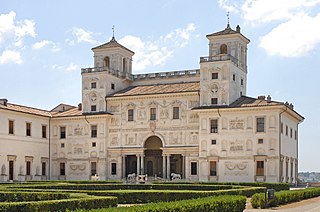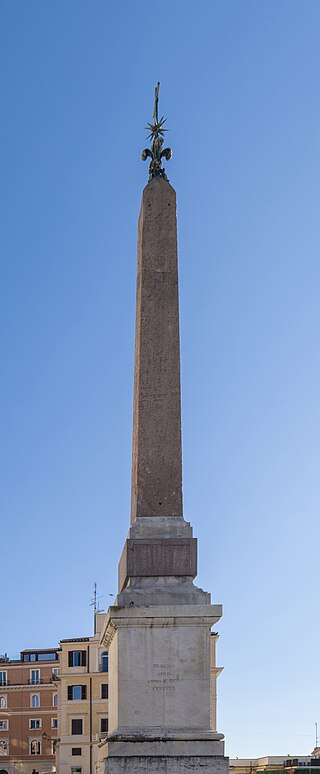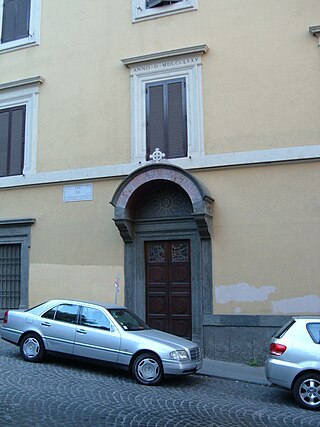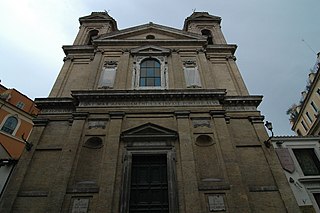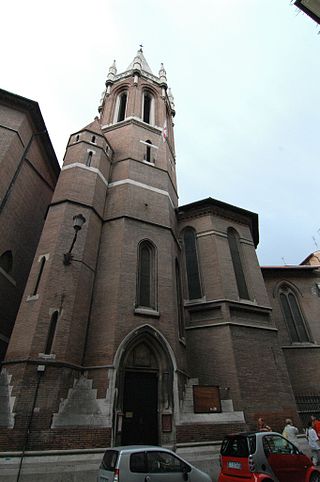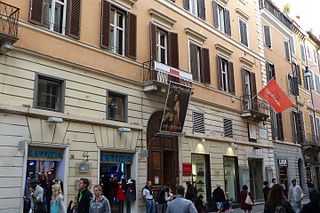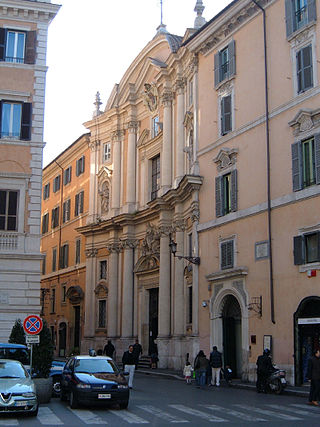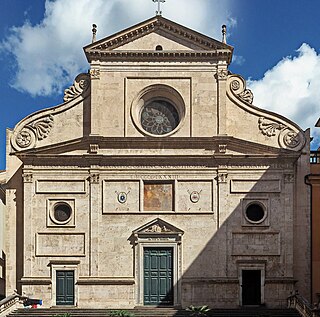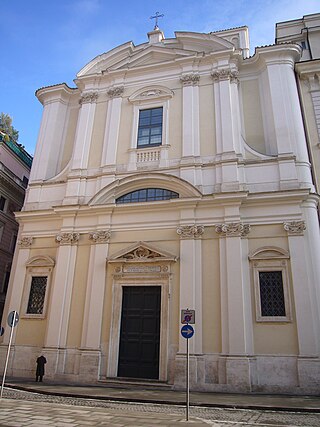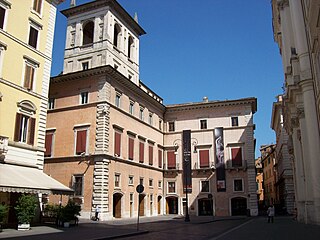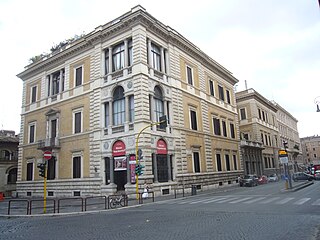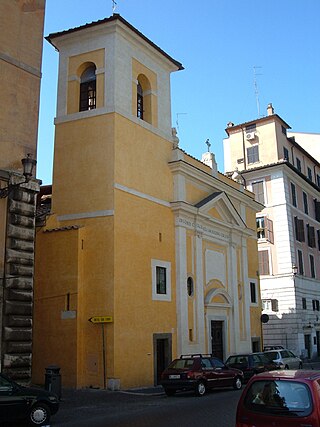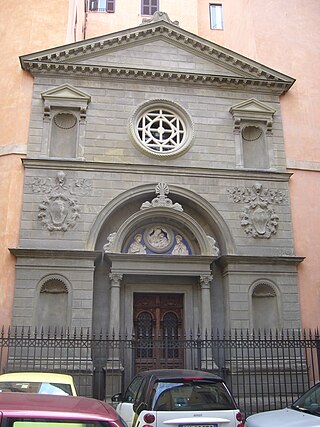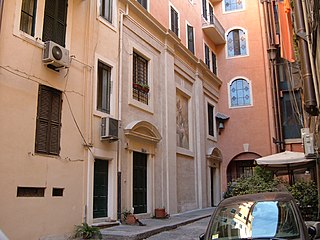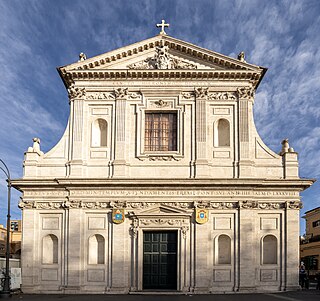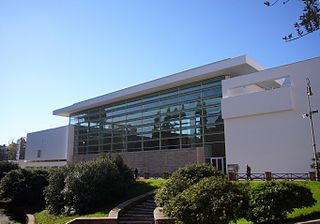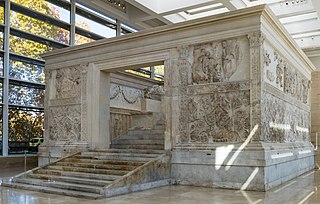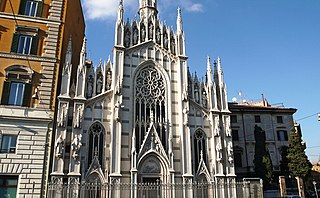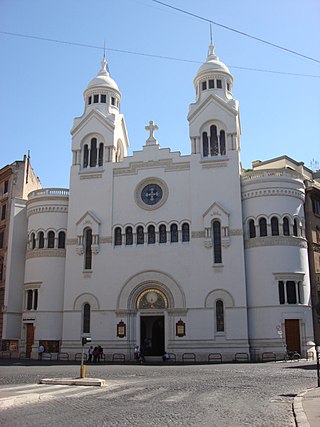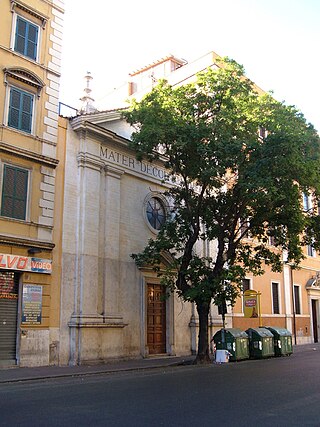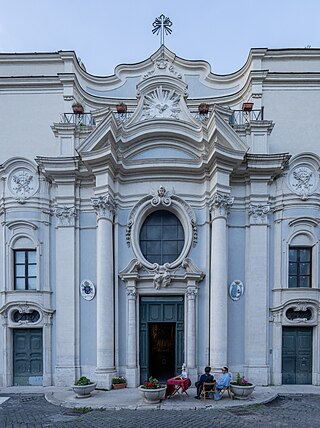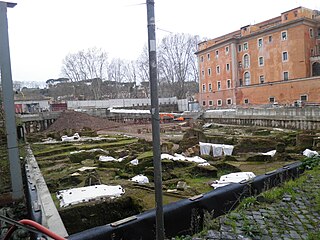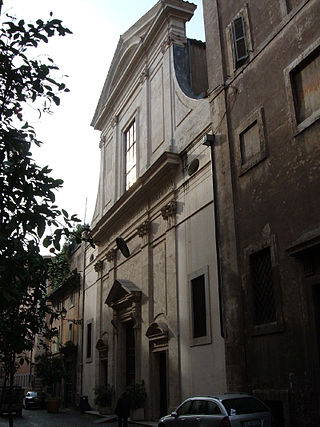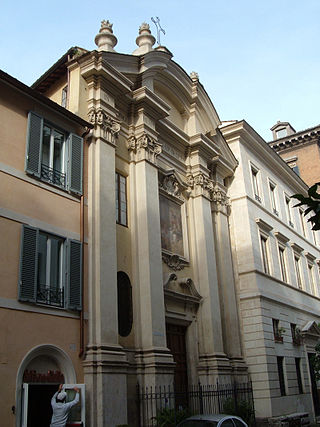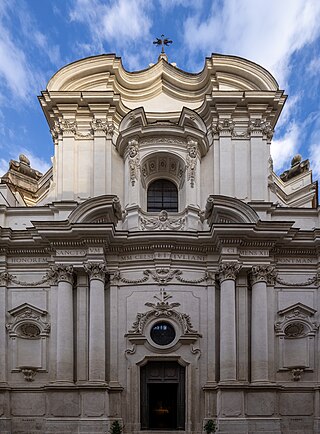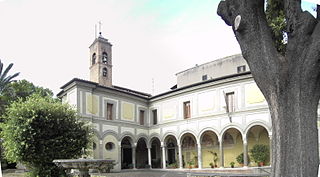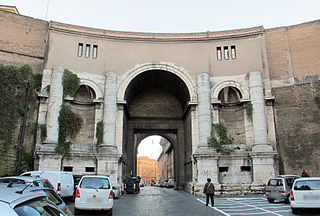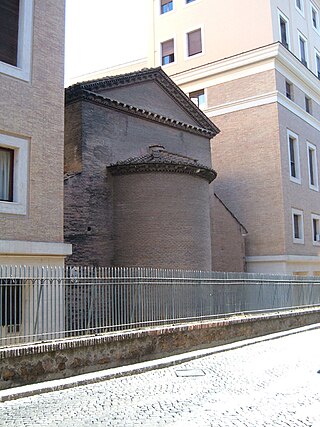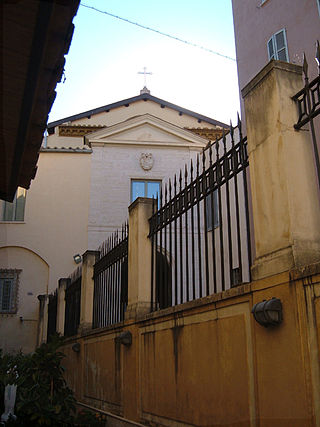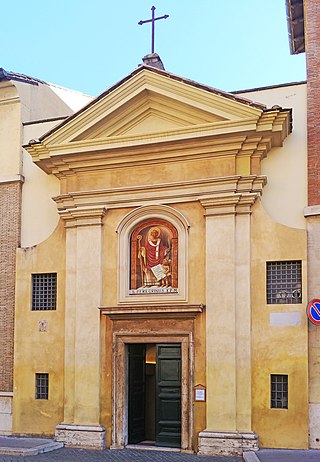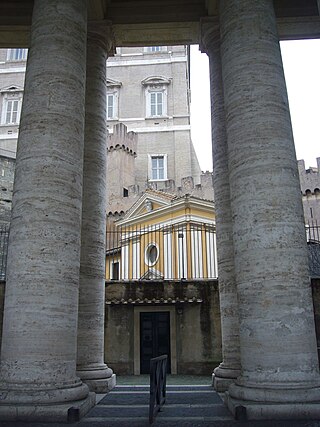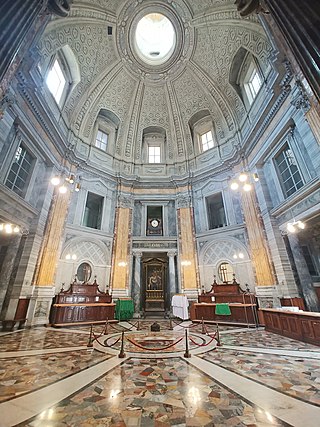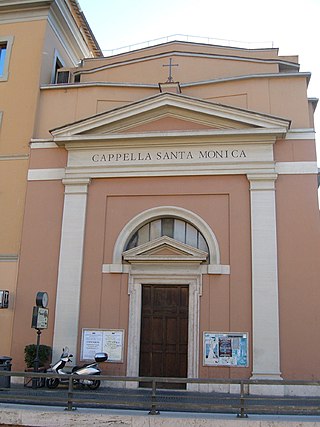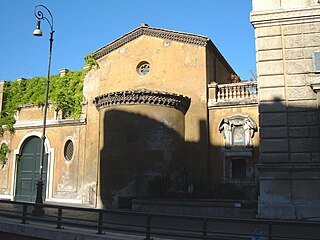Self-guided Sightseeing Tour #14 in Rome, Italy
Legend
Guided Free Walking Tours
Book free guided walking tours in Rome.
Guided Sightseeing Tours
Book guided sightseeing tours and activities in Rome.
Tour Facts
10.4 km
312 m
Experience Rome in Italy in a whole new way with our free self-guided sightseeing tour. This site not only offers you practical information and insider tips, but also a rich variety of activities and sights you shouldn't miss. Whether you love art and culture, want to explore historical sites or simply want to experience the vibrant atmosphere of a lively city - you'll find everything you need for your personal adventure here.
Activities in RomeIndividual Sights in RomeSight 1: Villa Medici
The French Academy in Rome is a French government institution located in Rome. It was founded in 1666 with the aim of welcoming young French artists for a period of one to five years so that they could develop their own creative projects.
Sight 2: Obelisco Sallustiano
The Sallustiano obelisk is an obelisk in Rome located in Piazza della Trinità dei Monti in front of the church of the same name and at the top of the staircase leading to the Spanish Steps, in the Campo Marzio district.
Sight 3: Chiesa dei Santi Giorgio e Martiri inglesi
San Giorgio e Martiri Inglesi is a Roman Catholic church in Rome, in the rione Campo Marzio on via di San Sebastianello.
Sight 4: Sant'Atanasio
The Church of Saint Athanasius, also known as Sant'Atanasio dei Greci, is a Greek Catholic titular church located on Via del Babuino 149, near the Spanish steps, in the rione Campo Marzio of Rome, Italy.
Sight 5: All Saints' Anglican Church
All Saints' Church is an active English-speaking chaplaincy of the Church of England's Diocese in Europe - a part of the Anglican Communion - in Rome, Italy.
Sight 6: Santissimi Nomi di Gesù e Maria in Via Lata
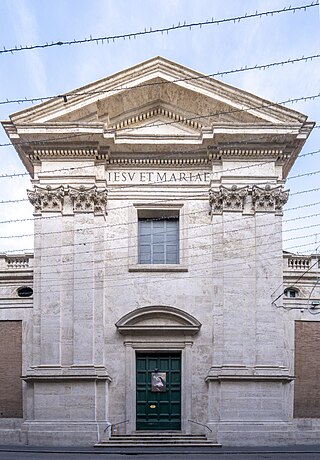
Gesù e Maria is a Baroque church located on Via del Corso in the Rione Campo Marzio of central Rome, Italy. It faces across the street the similarly Baroque facade of San Giacomo in Augusta.
Sight 7: Casa di Goethe
The Casa di Goethe is a museum in Rome, in Via del Corso 18, dedicated to Johann Wolfgang von Goethe, his Italian Journey and his life at Rome in the years from 1786 through 1788. During his journey Goethe wrote a journal and also many letters which would be published in 1816-17 as the Italian Journey.
Sight 8: San Giacomo in Augusta
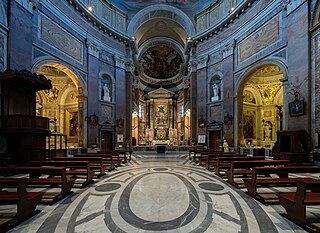
San Giacomo in Augusta is a Baroque church in Rome, Italy. It was the church of the Hospital of San Giacomo degli Incurabili.
Sight 9: Chiesa della Santissima Trinità degli Spagnoli
Santissima Trinità a Via Condotti or Santissima Trinità degli Spagnoli is a church in Rome at the start of via Condotti in the Campo Marzio district. It is one of the national churches of Spain in Rome.
Sight 10: Basilica di San Lorenzo in Lucina
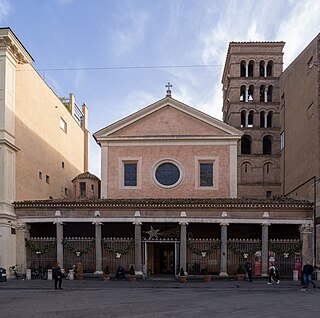
The Minor Basilica of St. Lawrence in Lucina is a Roman Catholic parish, titular church, and minor basilica in central Rome, Italy. The basilica is located in Piazza di San Lorenzo in Lucina in the Rione Colonna, about two blocks behind the Palazzo Montecitorio, proximate to the Via del Corso.
Sight 11: Basilica of Saint Augustine in Campo Marzio
The Basilica of Saint Augustine in Camp Martius, commonly known as Basilica of Saint Augustine is a Catholic titular minor basilica in the Campus Martius area of Rome, Italy. Dedicated to Saint Augustine of Hippo it serves as the motherhouse of the Augustinian Friars.
Sight 12: Basilica di Sant’Apollinare alle Terme
The Basilica di Sant'Apollinare alle Terme Neroniane-Alessandrine is a titular church in Rome, Italy, dedicated to St Apollinare, the first bishop of Ravenna.
Sight 13: Museo Nazionale Romano
The National Roman Museum of Palazzo Altemps is one of the four locations of the National Roman Museum. It is located in the Ponte district in Piazza di San Apollinare 44, near Piazza Navona.
Wikipedia: Museo nazionale romano di palazzo Altemps (IT), Website
Sight 14: Museo napoleonico di Roma
The Napoleonic Museum of Rome is a historical museum dedicated to Napoleonic relics, mainly deriving from the collection of Count Giuseppe Primoli, donated to the city of Rome in 1927.
Sight 15: Chiesa di Santa Lucia della Tinta
The church of Santa Lucia della Tinta is a Catholic place of worship in Rome, in the Campo Marzio district, located in via di Monte Brianzo 61.
Sight 16: Sant’Ivo dei Bretoni
The Church of Saint Ivo of the Bretons is a Roman Catholic church dedicated to Saint Ivo of Kermartin, patron of Brittany. It is one of the national churches in Rome dedicated to Brittany.
Sight 17: San Gregorio dei Muratori
The church of San Gregorio dei muratori is an oratory in Rome, in the Campo Marzio district, in Via Leccosa.
Sight 18: Chiesa di San Girolamo dei Croati
Saint Jerome of the Croats is the national Catholic church of Croatia on Via Tomacelli in the Campus Martius of Rome. It is now a chapel of the Pontifical Croatian College of Saint Jerome in Rome and is only open to visitors by arrangement with the College.
Sight 19: Museo dell'Ara Pacis
The Museum of the Ara Pacis belongs to the Sistema dei Musei in Comune of Rome (Italy); it houses the Ara Pacis of Augustus, an ancient monument that was initially inaugurated on 30 January 9 B.C.
Sight 20: Ara Pacis Augustae
The Ara Pacis Augustae is an altar in Rome dedicated to the Pax Romana. The monument was commissioned by the Roman Senate on July 4, 13 BC to honour the return of Augustus to Rome after three years in Hispania and Gaul and consecrated on January 30, 9 BC. Originally located on the northern outskirts of Rome, a Roman mile from the boundary of the pomerium on the west side of the Via Flaminia, the Ara Pacis stood in the northeastern corner of the Campus Martius, the former flood plain of the Tiber River and gradually became buried under 4 metres (13 ft) of silt deposits. It was reassembled in its current location, now the Museum of the Ara Pacis, in 1938, turned 90° counterclockwise from its original orientation so that the original western side now faces south.
Sight 21: Sacro Cuore del Suffragio
Sacro Cuore di Gesù in Prati, also known as Sacro Cuore del Suffragio, is a catholic church in the centre of Rome (Italy), rising in the rione Prati, hosting the parish with the same name, entrusted to the Missionaries of the Sacred Heart.
Sight 22: Reformed Waldensian Church
The Waldensian temple in Piazza de Cavour, in Italian the chiesa valdese di piazza Cavour, is a Protestant church in Rome located in Piazza Cavour in the rione Prati. Built in 1913, it is attached to the Waldensian Evangelical Church. It also houses the Vaud Faculty of Theology and the Claudiana bookshop.
Sight 23: Chiesa della Beata Vergine Maria del Carmine
The church of the Blessed Virgin Mary of Mount Carmel is a church in Rome, in the Prati district, in via Sforza Pallavicini.
Wikipedia: Chiesa della Beata Vergine Maria del Carmine (IT)
Sight 24: Oratorio di Santa Maria Annunziata
Santa Maria Annunziata in Borgo, popularly known as Nunziatina, is an oratory of Rome (Italy), in the rione Borgo, facing on Lungotevere Vaticano.
Sight 25: Scuderie di Augusto
The Stables of Augustus are an archaeological site in Rome that emerged under the Lungotevere dei Tebaldi in largo Lorenzo Perosi, on the corner of Via Giulia and Via della Moretta, in the VII Regola district.
Sight 26: Chiesa di Santa Maria del Suffragio
Santa Maria del Suffragio is a 17th-century church in the center Rome, Italy. It lies on the via Giulia, in the rione Ponte.
Sight 27: Chiesa di San Biagio della Pagnotta
San Biagio della Pagnotta or San Biagio degli Armeni is a church in Rome, in the Ponte district, on via Giulia, near Palazzo Sacchetti. It is dedicated to Saint Blaise and is the national church of the Armenian community in Rome.
Sight 28: Chiesa dei Santi Celso e Giuliano
Santi Celso e Giuliano is a minor basilica and papal chapel of the Diocese of Rome in the care of the Institute of Christ the King Sovereign Priest. It has held its basilica status by custom and practice since ancient times. The church is located on Vicolo del Curato number 12, just off Via del Banco di Santo Spirito, the road leading to Ponte Sant'Angelo.
Sight 29: Chiesa di Sant'Onofrio al Gianicolo
Sant'Onofrio al Gianicolo is a titular church in Trastevere, Rome. It is the official church of the papal order of knighthood Order of the Holy Sepulchre. A side chapel is dedicated to the Order and a former grand master, Nicola Canali is entombed there. It is located on the Janiculum. Since 1946, the church has been under the care of the American congregation of the Franciscan Friars of the Atonement.
Sight 30: Porta Santo Spirito
Porta Santo Spirito is one of the gates of the Leonine walls in Rome (Italy). It rises on the back side of the Hospital of the same name, in Via dei Penitenzieri, close to the crossing with Piazza della Rovere.
Sight 31: San Lorenzo in Piscibus
The Church of San Lorenzo in Piscibus is a 12th-century small church in the Borgo rione of Rome. It is located near Saint Peter's Square and Vatican City, but its façade is not visible from the main street, Via della Conciliazione.
Sight 32: Chiesa dei Santi Michele e Magno
The Church of Saints Michael and Magnus is a Roman Catholic church in Rome, Italy, dedicated to Saint Michael the Archangel and the Bishop Saint Magnus of Anagni. It lies on the northern slope of the Palazzolo hill, in Rione Borgo, near the Vatican, and is the national church dedicated to the Netherlands. It is also known as the "Church of the Frisians". In 1989, the church was granted to the Dutch community in Rome. A 19th century source calls the church Santi Michele e Magno in Sassia, due to a location on a Vico dei Sassoni.
Sight 33: Saint Peregrin's Church
The Church of San Pellegrino in Vaticano is an ancient Roman Catholic oratory in the Vatican City, located on the Via dei Pellegrini. The church is dedicated to Saint Peregrine of Auxerre, a Roman priest appointed by Pope Sixtus II who had suffered martyrdom in Gaul in the third century. It is one of the oldest churches in the Vatican City.
Sight 34: Saint Anne of the Pontifical Grooms
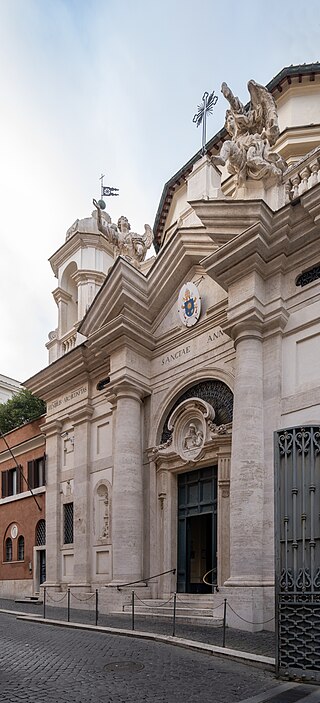
The Church of Saint Anne in the Vatican, known as Sant'Anna de' Palafrenieri, is a Catholic parish church dedicated to Saint Anne in Vatican City. The church is the parish church of the State of Vatican City and is placed under the jurisdiction of the Vicariate of the Vatican City and is located beside the Porta Sant'Anna, an international border crossing between Vatican City State and Italy.
Sight 35: Saints Martin and Sebastian of the Swiss
The Church of Saints Martin and Sebastian of the Swiss is a Roman Catholic oratory in Vatican City. The church was built by Pope Pius V in 1568 to serve as a private chapel for the Pontifical Swiss Guards, whose barracks are located next to Porta San Pellegrino, close to the Apostolic Palace. It is considered the national church of Switzerland in Rome.
Sight 36: Sacristy
The sacristy of St. Peter's stands on the southern side of the basilica of the same name, inside Vatican City.
Sight 37: Capella Santa Monica degli Agostiniani
The Church Santa Monica degli Agostiniani is a 20th-century Augustinian titular church in central Rome, immediately south of the Vatican, dedicated to Saint Monica.
Sight 38: Oratorio di San Pietro in Borgo
The church of San Pietro in Borgo is an oratory located in Piazza del Sant'Uffizio in Rome, near Porta Cavalleggeri. It is located near the Vatican City, in an Italian area subject to extraterritoriality in favor of the Holy See.
Share
How likely are you to recommend us?
Disclaimer Please be aware of your surroundings and do not enter private property. We are not liable for any damages that occur during the tours.
GPX-Download For navigation apps and GPS devices you can download the tour as a GPX file.
